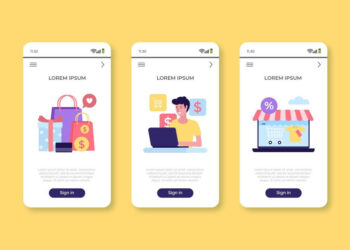We live in a dynamic world that changes every second, and we must move along with these changes. Smartphones are becoming very popular, and increased internet access makes our lives much easier to manage.
To enhance user experience, developers must combine smartphones’ power and websites’ efficiency. However, it has not been easy for the developer community to build a strong user experience that transcends user expectations. While there are multiple frameworks and methods to consider, here are the top PWA frameworks. Their pros and cons will also guide your framework choice to find a solution that works.
Angular
Angular is an excellent PWA framework once you pass the learning curve. It is a modular framework with every Angular element built with compatibility with other projects outside Angular. Angular uses the Ahead of Time (AOT) compilation mechanisms for fast rendering. This happens by transforming Angular HTML and TypeScript into JavaScript code before downloading and running the app on a browser.
Advantages
- A larger developer community.
- Simple to implement with its full modular elements and clearly defined methodologies.
- Angular 8 provides CLI support to simplify downloading and installing experience.
- Learning Angular is easy because of simpler documentation and standardized code.
Disadvantages
- You must learn TypeScript first before you develop a web app code.
- Building applications with Angular JS is complicated.
- Code is not standardized because it has many ways to solve problems.
React
React is a popular Web App Development framework. Its rise to fame is because of its ‘Create a new React app’ generator that makes its PWA a Web standard. Multiple JavaScript libraries in the React PWA framework give developers additional development options. It provides advanced tools and detailed docs for single- and multi-page applications. In addition, the platform has a virtual Document Object Model (DOM), making react one of the best platforms.
Advantages
- React PWAs are highly flexible and can be scaled using extra packages.
- Allows developers to deploy similar codes for native apps.
- The virtual DOM simplifies the rendering process making it faster.
Disadvantages
- Learning JSX and JavaScript is necessary to use React PWA solutions.
- It can be risky to implement because it lacks a clearly-defined methodology.
- Migrating to JSX from Angular JS is almost impossible.
Vue
Vue and React characteristics are highly compatible. They both allow sufficient rendering of the actual DOM and lightweight virtual DOM. However, Vue focuses on enhancing technologies like HTML and CSS instead of JavaScript. Introducing a fully functional PWA framework set (CLI3) significantly boosts Vue’s coding process.
Advantages
- Easy to learn.
- Sufficient documentation.
- A combination of JSX and TypeScript delivers the greatest results.
- Makes better animations
- Better rendering performance with virtual DOM
Disadvantages
- Multiple unresolved integration difficulties in large projects.
- Small develop community.
Ionic
Ionic is an impressive open-source PWA framework technology that is free to use. It combines Angular and Apache Cordova to run a high-tech stack. Ionic advancement derives from using web technologies like CSS, JavaScript, and HTML. It also involves mobile best practices like faster hardware transitions and touch-minimizing.
Advantages
- A large community that allows the free building of applications
- Basic CSS, HTML, and JavaScript knowledge is required because the learning curve is less steep.
- Multiple built-in libraries for faster development
Disadvantages
- Difficult to debug.
- Randomly builds crashes.
- Some native applications are unstable and may conflict with each other.
PWABuilder
PWABuilder is a product by Microsoft and is an open-source framework for developing components for a web app responsive across platforms and devices. It has a strong developer community and supports Android and iOS development.
Advantages
- Can convert websites into PWAs without development work.
- PWABuilder provides easy ways to start the development process.
- You can either download the PWA package or enhance the web app with more features.
Disadvantages
- The flexibility of the PWA leads to issues making the web app less customizable.
- Harder to work with the automated process
Polymer
Polymer is a solution by Google that is becoming very popular among developers. It features mechanisms to assist developers in handling design quirks. Furthermore, the polymer has a source code that does not need any special requirements. Therefore, developers can recreate HTML components to their needs and incorporate them into the web project.
Advantages
- Polymer APIs are simple to comprehend.
- The app is simple to implement because of its rich instructions and progressiveness.
- Responsive data tiers, layouts, and routings provide full web app stack support.
Disadvantages
- Not compatible with search engines
- May need debugging software at times
Svelte
Svelte is similar to Vue because it is modern component-based architecture. It is sold as a “reactive system” despite being written radically differently. It is under an MIT license, with the most recent version being released in 2019. Mobile app development services use Svelte to build responsive websites with fast-loading pages.
Advantages
- Svelte facilitates faster page loading, syntactic analysis, and execution using a leaner code.
- It is versatile and simple because it facilitates plain CSS and various CSS progressive Web App frameworks.
Disadvantages
- The developer community support is negligible
Progressive Web Apps (PWA) are now the biggest thing for developers who want to combine the power of the web and mobile. This enables them to expand their reach and increase the accessibility of their digital presence. The PWA frameworks listed here are proven efficient and can deliver results.
Discover more insights on Spicy Chat.






